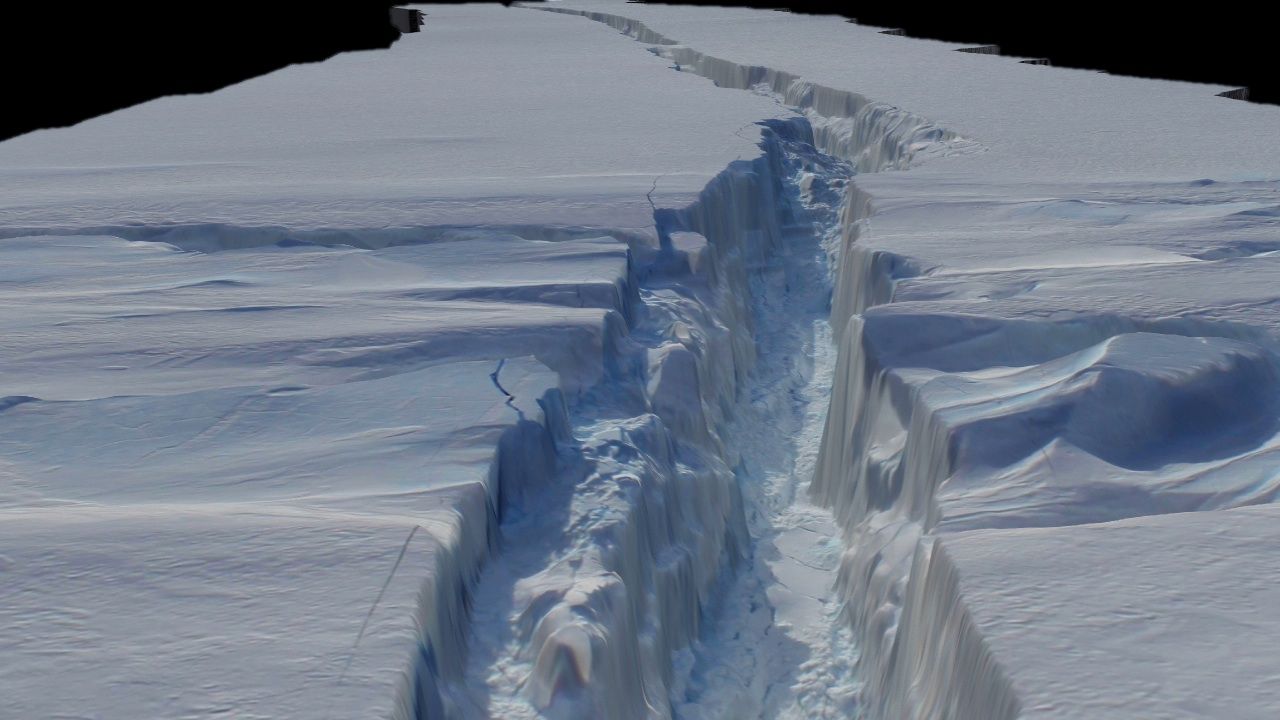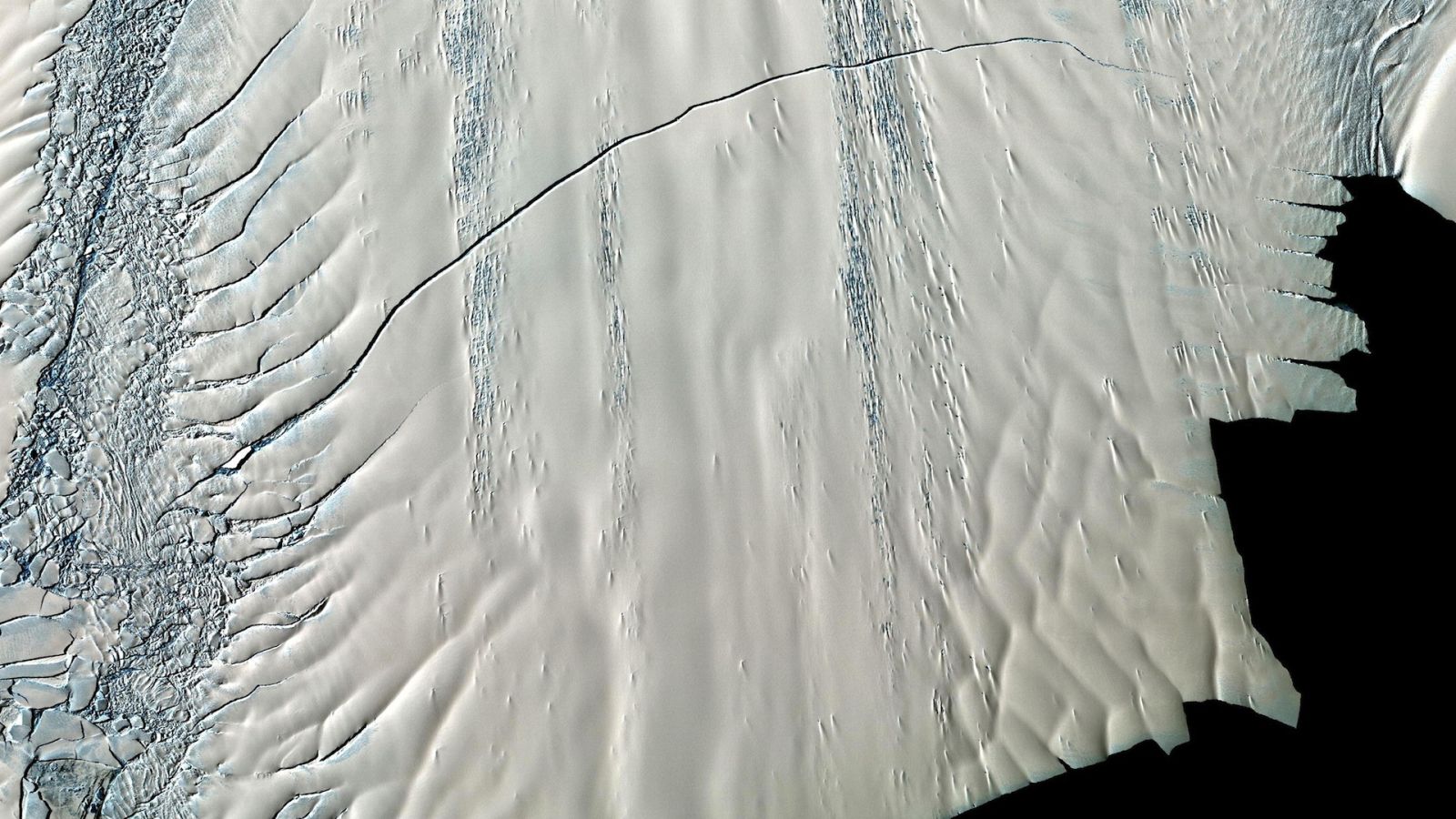A glacier record of 78 miles per hour
Follow us on Google News (click on ☆)
This finding stems from observations of the Pine Island Glacier in Western Antarctica, a critical area that acts as a plug preventing more interior ice from sliding into the sea. In 2012, a 6.5-mile (10.5 kilometers) long crack formed on this glacier, marking the fastest fracture event known to date.

Representation of the fracture of Pine Island Glacier.
Image NASA
This discovery intrigues scientists as it suggests that vast masses of ice can shatter like glass. This behavior could provide new insights into how climate change affects the ice caps. The presence of viscous sea water in the crevasses should slow the process. However, this study shows that the fracture of Pine Island Glacier resembles more the breaking of glass, a behavior that current models now need to integrate.
Understanding these phenomena is vital. The Pine Island and Thwaites glaciers, often called the "Doomsday Glacier", have been retreating since the 1940s and their melting has accelerated since the 1980s. Their disappearance could have dramatic consequences, as Thwaites' melt has already contributed to 4% of the global sea level rise. If these glaciers were to melt entirely, it would result in a significant rise in sea levels.

The fracture of Pine Island Glacier.
Image NASA
These results, published in the journal AGU Advances, underscore the urgency of monitoring these glacial behaviors to anticipate the effects of climate change on our environment. The research method combining satellite observations and seismic data could pave the way for a better understanding and modeling of ice fractures, a crucial challenge for the future of our planet.